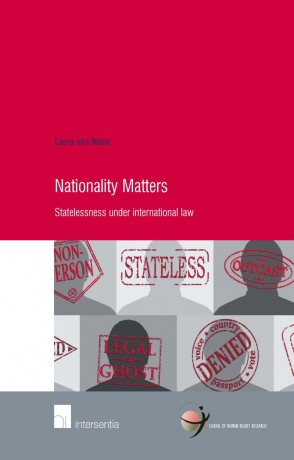We are now closed for the Christmas and New Year period, returning on Monday 5th January 2026. Orders placed during this time will be processed upon our return on 5th January.

It is a familiar and irrefutable fact that the world we live in today is marked with divisions. Border posts, frontier patrols and even elaborate fencing establish the dividing lines between the territory of one state and the next. Meanwhile, partitions have also been created between people. Individuals do not (just) exist as isolated beings, they are connected to one state or another through the legal bond of membership, nationality. But these divisions are not watertight. Just as there is the occasional slither of no-man’s land between two countries, there are also individuals who remain unclaimed by any state. These are the world’s stateless persons.
Some fifty years ago, the international community adopted a pair of instruments to tackle the anomaly that is statelessness: the 1954 Convention relating to the Status of Stateless Persons and the 1961 Convention on the Reduction of Statelessness. The former was designed to offer a minimum standard of protection to those individuals who found themselves without a nationality, while the latter was crafted in order to prevent new cases of statelessness from arising. However, these documents were quickly forgotten and failed to have any real impact. Then, at the turn of the millennium, a deepening understanding of the severity and potential implications of statelessness – as well as the emergence of several large, new caseloads of stateless persons – spurred the international community to renew its attempts to tackle the issue. It is the current, growing preoccupation with the plight of the stateless that offered an opportune moment to reflect upon the question as to whether the international community now has the necessary tools at its disposal to respond effectively to the issue of statelessness. This study is devoted to answering that question by investigating in detail both the (enduring) value of the two tailor-made statelessness conventions, as well as ascertaining what other areas of international law – in particular human rights law – have to offer in answer to the phenomenon of statelessness.